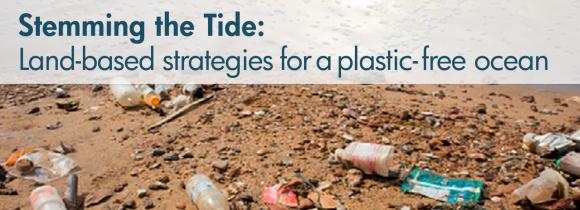 For several years now, we have posted about the so-called ocean garbage patches, the great swaths of the oceans where plastic and other floating debris accumulate while riding on vast circular currents. The problem is that an estimated 8 million metric tons of plastic are dumped into the world’s oceans each year. A new study by the Ocean Conservancy and McKinsey Center for Business and Environment, Stemming the Tide, identifies the leading plastic polluters. According to the study, five countries are responsible for 60% of the plastic dumped in the oceans — China, Indonesia, the Philippines, Thailand and Vietnam.
For several years now, we have posted about the so-called ocean garbage patches, the great swaths of the oceans where plastic and other floating debris accumulate while riding on vast circular currents. The problem is that an estimated 8 million metric tons of plastic are dumped into the world’s oceans each year. A new study by the Ocean Conservancy and McKinsey Center for Business and Environment, Stemming the Tide, identifies the leading plastic polluters. According to the study, five countries are responsible for 60% of the plastic dumped in the oceans — China, Indonesia, the Philippines, Thailand and Vietnam.
At current rates, by the year 2025, the rate of plastic dumping is expected to double and the ocean will contain nearly 250 million metric tons of plastic. The study notes: “Unless steps are taken to manage this waste properly, by 2025 the ocean could contain one ton of plastic for every three tons of finfish—an unthinkable outcome.” Stemming the Tide recommends strategies for managing and limiting plastic pollution. The real question is whether enough can be done quickly enough. The study goes on to say: ” The highest levels of [plastic] leakage are in regions that also have some of the highest projected growth rates for plastic waste; the quantity of plastic estimated to enter ocean environments in 2025 is double that of 2015. The issue is urgent but not insurmountable; the next ten years are critical.“

Pingback: Why Stopping Ocean Plastic Dumping Matters — Are You Eating Plastic for Dinner? | News For Mariners